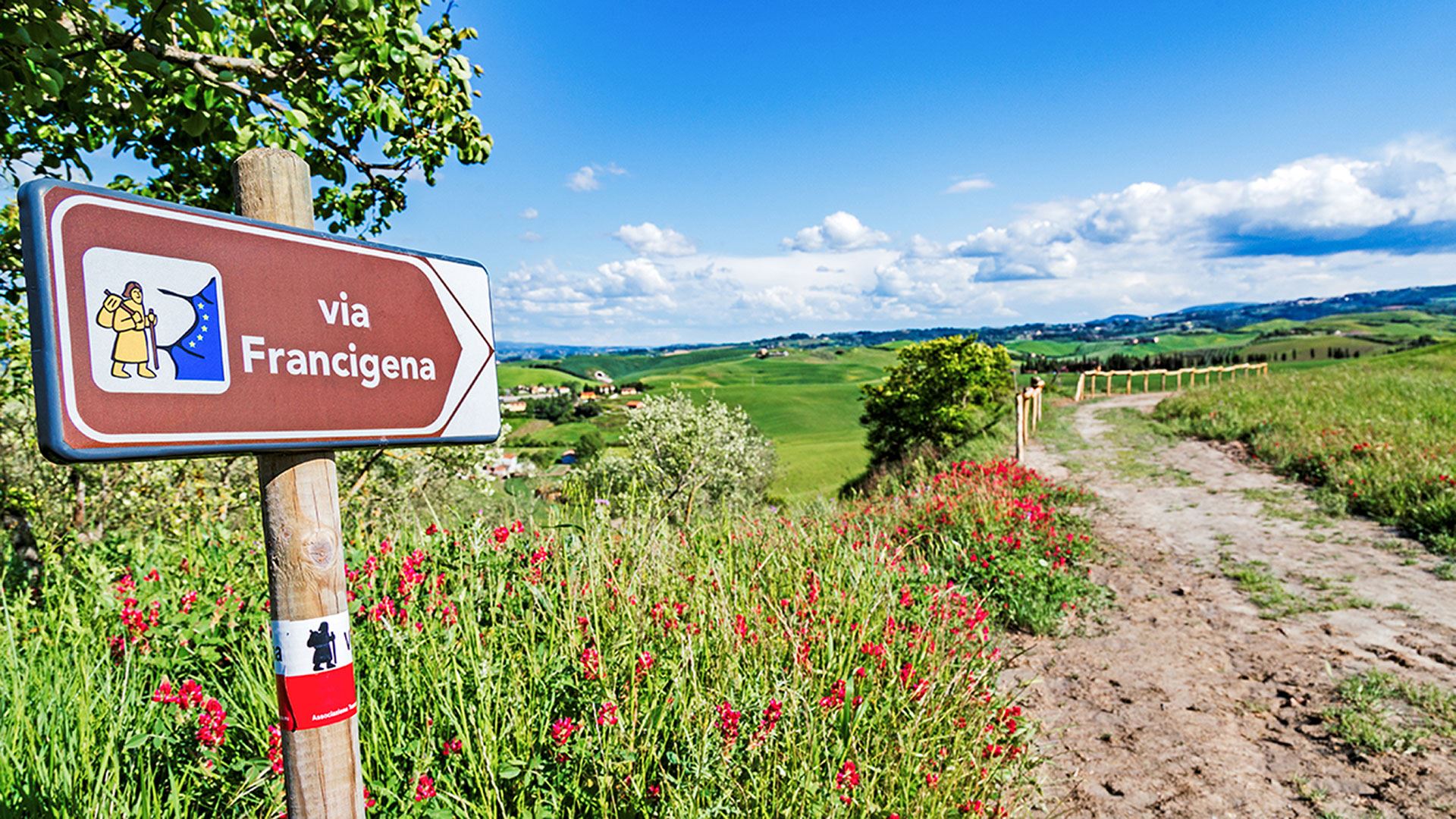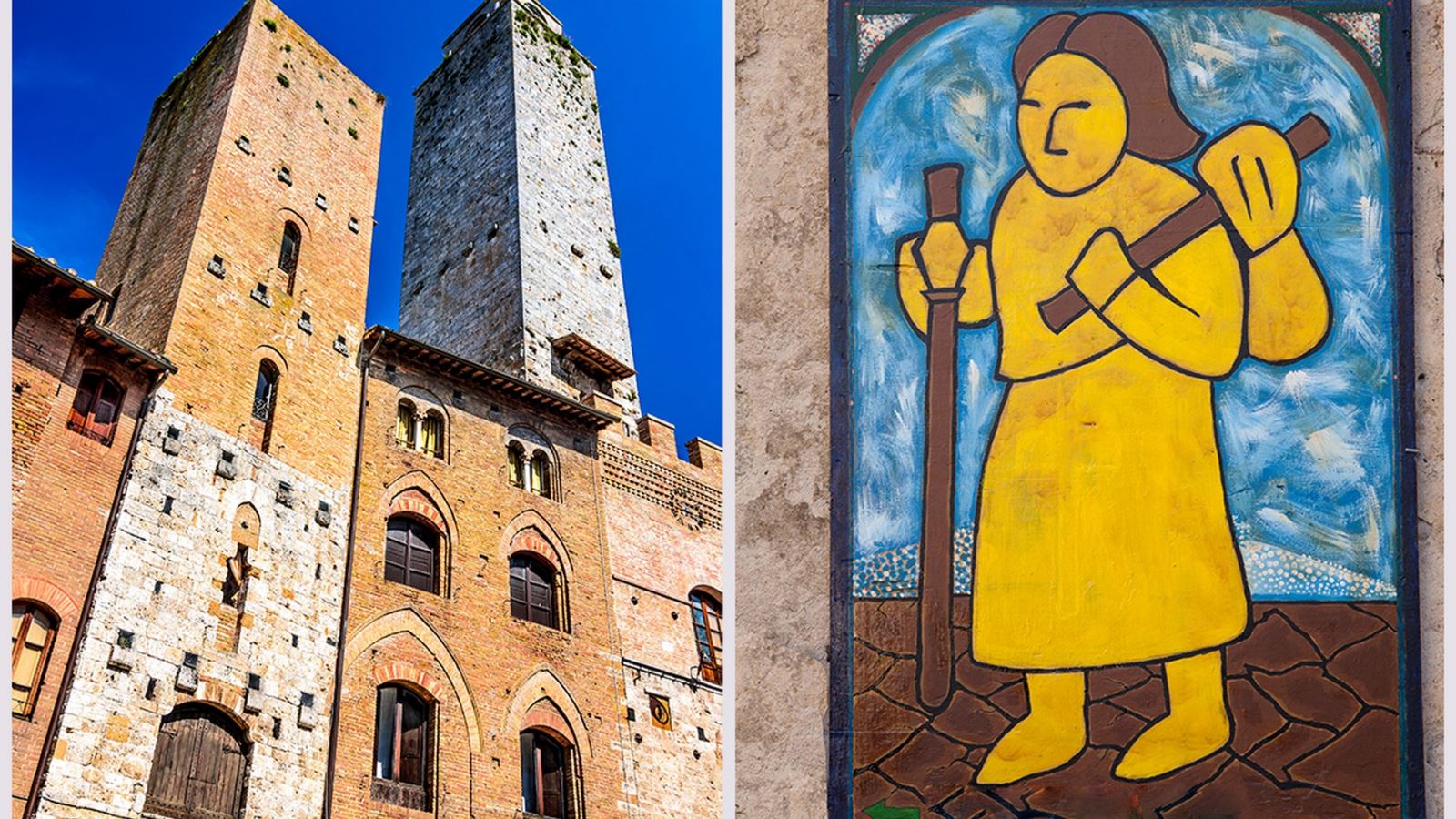It felt like I was walking into a painting. Beneath the blue sky, a grassy path curved around a field scattered with haystacks, with a row of cypress trees at its rear. The colourful patchwork of a distant hill was made up of golden fields, a pale green vineyard and a darker square of olive trees, while lone villas and a tiny hilltop town completed the view. It was the perfect Tuscan scene that I always dreamed of exploring. Walking some of the Via Francigena, the ancient pilgrim route from Northern Europe to Rome, I was treated to such landscapes all day every day.
I’d started that particular day in the town of San Miniato, filling my water bottle at the fountain and stocking up on fruit, sandwiches and sweet cantuccini biscuits at the local deli before setting off. San Miniato, strategically located on the junction between the Via Francigena and the road from Florence to Pisa, was the scene of many battles in the Middle Ages and various rulers fortified it with a castle and city walls. It was all quiet, though, as I looked out on the Arno Valley from the clock tower, before leaving town to see the Tuscan countryside on foot.
Turning off the main road, I joined a white gravel trail, exchanging the noise of the traffic for that of water in a stream and the songs of birds and crickets. I passed lavish stone villas with tree-lined driveways, and working farms, vineyards and olive groves, admiring as I went the views across the valleys to blue and black hills on the horizon.
San Gimignano is an essential stop along the route. Photo: Alpineguide/Alamy, Kevin George/Alamy
Later that day, I arrived in the town of Gambassi Terme and sipped a reviving coffee in the main square before exploring the village’s streets and alleys. I discovered tall houses with ornate doorways, windows framed by wooden shutters and boxes of flowers, and old-fashioned street lamps that lit my way when dusk descended. In medieval times the town was popular for its hot springs and pilgrims would stop here on their long journey to rest weary limbs or drink the curative waters. Modern-day pilgrims like me can still take the waters or check into a spa resort.
The next day, the trail led me to San Gimignano. At times the path was lined with wild white flowers among which danced butterflies and dragonflies. Elsewhere, I walked through copses of dark green oak and chestnut forest and olive groves, and saw signs alerting me to the likely presence of deer and where I might make a detour for a tasting of Chianti wine and olive oil.
One of my favourite rest stops was Monastero di Bose in Pieve di Cellole, at the top of a hill, garlanded with wild flowers and supplied with wooden benches from which to take in the views across the Elsa Valley. A notice here requests ‘silenzio’ – but the views are enough to still anyone for a moment of quiet reflection. Here, too, I found a Romanesque church dating from 1109 that has been rebuilt, and a small shop where I browsed pottery and preserves made at the monastery.
The next part of the trail took me through a meadow of tall grass and flowers to the main road to San Gimignano, and the hilltop town’s famous medieval towers came into view.
I passed through a grand gateway into the narrow streets of the old town, where restaurants and gelaterias lined my way to the Piazza del Duomo. Shops here sell everything from souvenirs to salami. But a better treat awaited me at the top of the Torre Grossa, where I contemplated the landscapes through which I’d travelled and those still to come on the Via Francigena.

-

- Recently viewed














